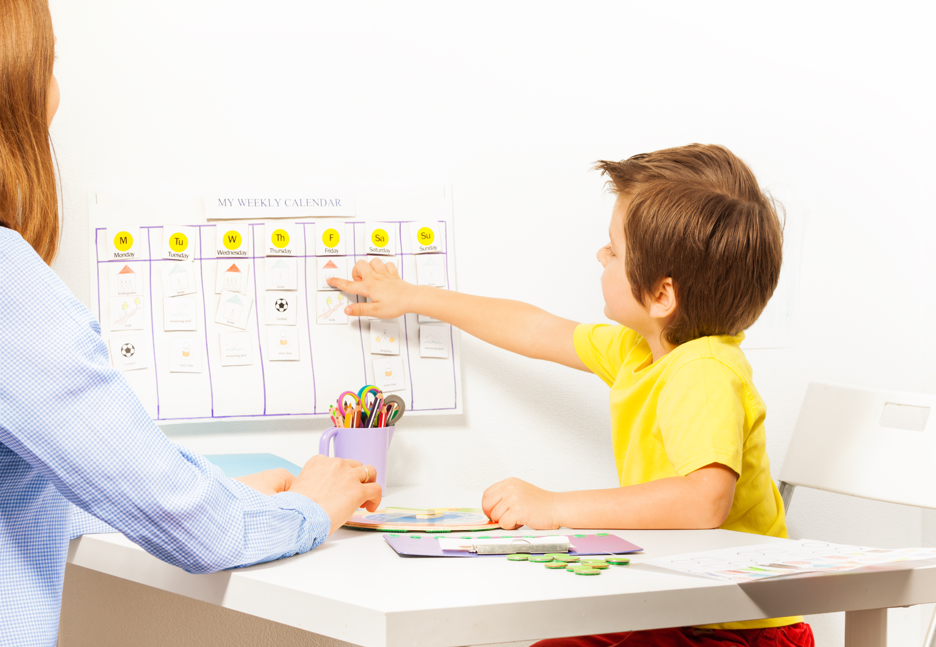Mac and cheese, hot dogs, pizza, repeat. If you’re frustrated by your child’s selective eating habits, you’re not alone. Studies show that picky eating ranges from 14 – 50% of preschool children and 7 – 27% of older children. While many children will outgrow this phase, for some children, picky eating habits persist and become a health concern. Feeding therapists and some speech therapists and ABA therapists have the necessary training to help families to increase the number of healthy foods in a child’s diet. If you are not sure if your child’s fussy eating habits rise to the level of needing a specialist, or if you are on a waitlist for services, there are a few simple steps for introducing new foods that you can take to help your child begin to explore new foods.
In our first post in this series, we offered tips to parents on how to prepare for the process of introducing new foods. In this post, we’ll dive into the actual process of teaching a child to enjoy new foods.
Decide Which New Food to Start With
To start, take out your list of foods that your child loves to eat. Place a star next to a couple of their most highly preferred foods (e.g., berries, popcorn, cookies). These will be used initially as reinforcers to help motivate your child to try new foods.
Next, take out your list of foods that you want your child to start eating. Which of these foods do you think are most critical to your child’s nutrition? Place a star next to a few of these foods.
Which foods do you think are most similar to a food your child already enjoys? Circle those foods. For example, if your child likes apples, they might learn to enjoy a crunchy vegetable like carrots, celery, or jicama, before they enjoy a food that is a different texture, like tomatoes.
Are there any foods that you circled that also have a star, indicating both high nutritional value and similar to a food that your child already enjoys? If so, start with that food!
Introducing The New Food Item
Introduce new food at the start of a meal – it’s when your child is naturally most hungry and most motivated to try something new. Have two plates ready on the table. One plate should hold the food that you are introducing to your child. The second plate should hold the food your child loves that you are using to reinforce your child’s willingness to try something new. Ensure that neither plate is within your child’s reach.
Let’s walk through an example of how you can introduce the new food and reinforce your child’s willingness to try it. We’ll use apples as the preferred food and carrots as the nonpreferred, new food.
Step 1: Present the New Food
To start, place the plate with the new food item (in this case, carrots) on the table in front of your child. Smile, show your excitement, and offer praise and a small amount of the preferred food (e.g., a piece of apple) to your child, simply for tolerating having the plate of the nonpreferred food in front of them. Model eating a small amount of the carrots. Smile and talk about how yummy the food is.
Step 2: Model
Next, model touching a carrot with your finger. Prompt your child to also touch a carrot.
Step 3: Reinforce
Offer praise and a piece of the apple when your child successfully copies you. Next, model touching the carrot to your tongue or model taking a tiny bite of the carrot. Continue the process of offering praise and a small piece of the preferred food each time your child makes new strides towards eating a bite of the new food.
Main Takeaways
The process of introducing new foods can take many days of exposure before a child begins to really enjoy the new food. Expect that it will take at least seven opportunities (days) of having this food introduced before your child tolerates it without your prompting. The reward for your child is a broader palette and additional nutrients, and for you, it’s gradually lowered stress and perhaps less time preparing multiple separate meals.
Download free printable feeding resources.
If you are looking for more quick tips on how to use ABA strategies at home visit our Youtube channel.
You can also find more articles on a variety of ABA strategies here.




